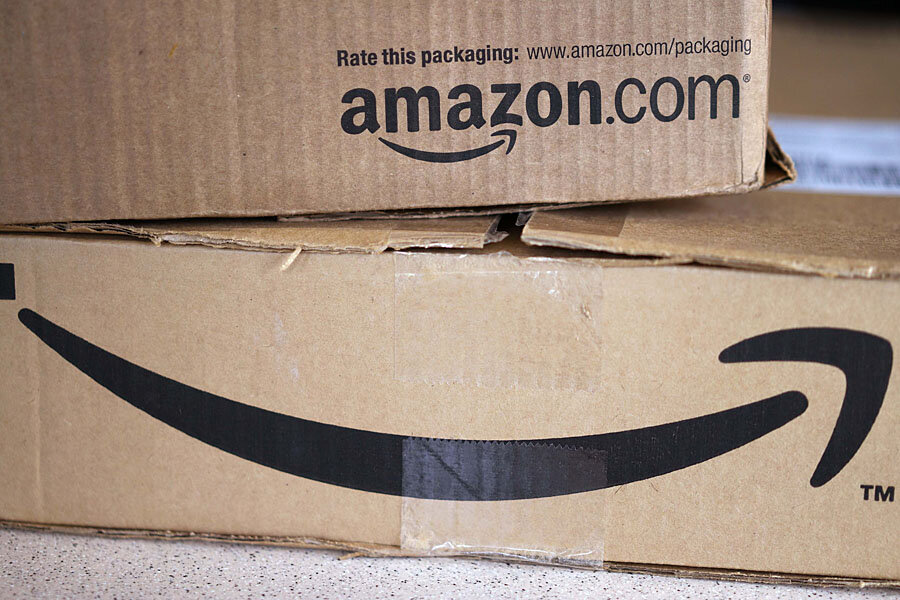Why online king Amazon wants to open an actual store
Loading...
Amazon has been a virtual thorn in the side of big box chains like Wal-Mart and Target for nearly two decades. So why not become a physical one?
The online retail is planning to open its first brick-and-mortar location in midtown Manhattan, according to a report from the Wall Street Journal. Situated on 34th Street, across from the Empire State building and on the same street as Macy’s flagship location, the store is set to open in time for the holiday shopping season. The company has not yet confirmed the report.
The vastness of Amazon’s online inventory, of course, could never fit into a Manhattan storefront. So what can shoppers expect from browsing the newly physical Amazon shelves?
According to the Journal, the space “would function as a mini warehouse, with limited inventory for same-day delivery within New York, product returns and exchanges, and pickups of online orders. The Manhattan location is meant primarily to be a place for customers to pick up orders they’ve made online, but will also serve as a distribution center for couriers and likely one day will feature Amazon devices like Kindle e-readers, Fire smartphones, and Fire TV set-top boxes, according to people familiar with the company’s thinking.”
Some, predictably, are wondering why Amazon would want to venture into the brick-and-mortar retail space when it can compete with (and in some cases decimate) major big-box chains just fine without its own stores. The company’s flexibility is part of its strength – it doesn’t have to deal with the typical costs of managing retail spaces, allowing it to offer competitive prices on almost any product it pleases. Midtown Manhattan is an expensive place for an inaugural storefront. “Amazon’s value proposition is its huge selection and shipping that comes to me,” Forrester analyst Sucharita Mulpuru tells Forbes. “Both those aren’t going to happen at a physical store in Manhattan.”
In-store retail, too, has been losing ground to e-commerce for several years. E-commerce sales jumped 9.3 percent year-over-year during the 2013 holiday shopping season, making up $95.7 billion in total sales, according to the National Retail Federation. Growth for overall sales was a comparatively paltry 3.8 percent. “Cyber retail sales are increasing like gangbusters and we expect the clicks to make accelerated gains over the bricks,” IHS Global Insight economist Chris Christopher said in a January 2014 analysis.
Despite such gains, however, the overwhelming majority of retail purchases are still made in stores. E-commerce sales made up just 6.4 percent of total retail sales in the second quarter of 2014, according to the Commerce Department, and even at current growth rates it would take a long, long time for online sales to overtake in-store purchases. Amazon wouldn’t be the first online merchant to move into storefronts (clothiers Bonobos and Warby Parker, as well as the makeup subscription retailer Birchbox have all opened their own stores), though it would be the biggest.
But beyond another sales outlet, a physical store has the potential to be invaluable in terms of marketing. As New York magazine points out, Apple’s first store openings in 2001 were met with widespread skepticism; now, the frenzy around the company’s new product launches, with customers lining up around the block for the latest iPhone or iPad, have become news events in themselves. Apple stores are the most profitable retail spaces in the world, making about $39 million in revenue per store last year. Ebay and Microsoft have made their own moves into the physical retail space as well.
Amazon has been planning a store opening for years, according to the Journal, scouting out locations in its hometown Seattle and experimenting with pop-up shops for select products, like the Kindle.
The company, meanwhile, is facing a pair of dicey legal issues at present. The European Union is investigating Amazon for possibly benefiting from an illegal tax arrangement in Luxembourg. Here in the United States, the Supreme Court heard arguments this week in a case brought on by Amazon’s warehouse workers, who sued the company over having to spend significant amounts of unpaid time going through security screenings. The workers contend that they should be paid for their time in the screenings, which can take 25 minutes per day on average.








